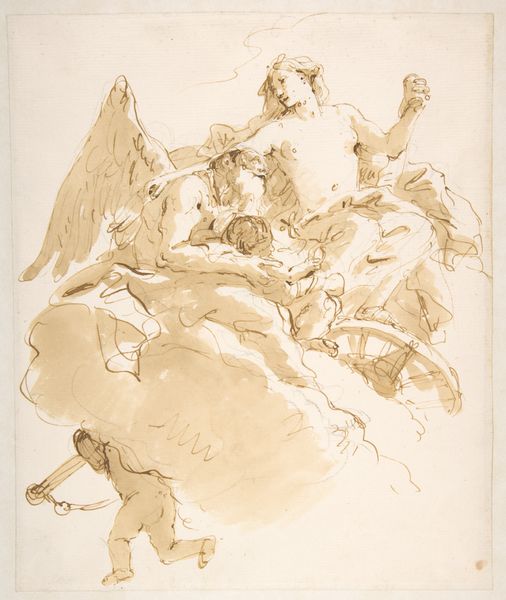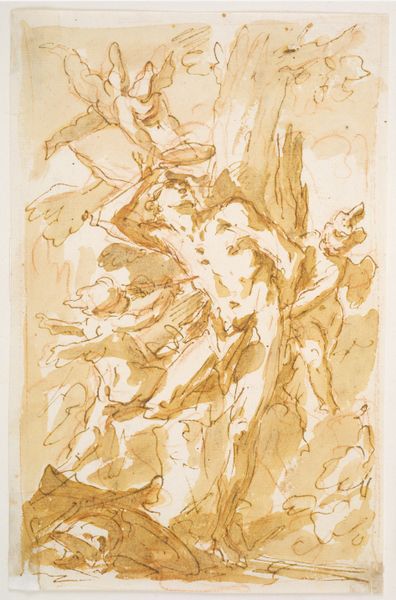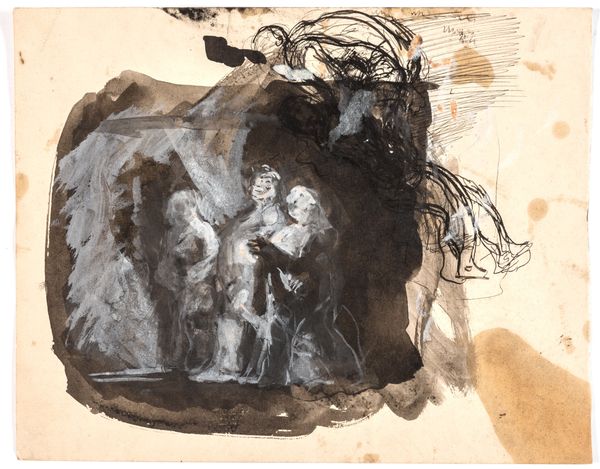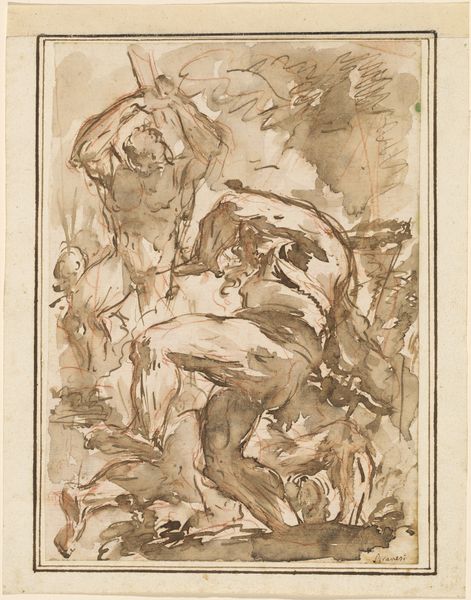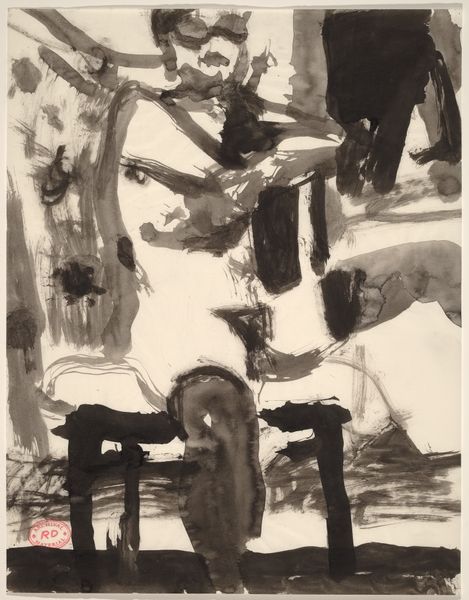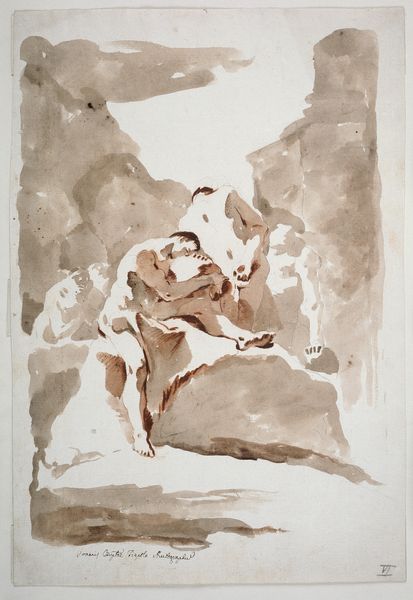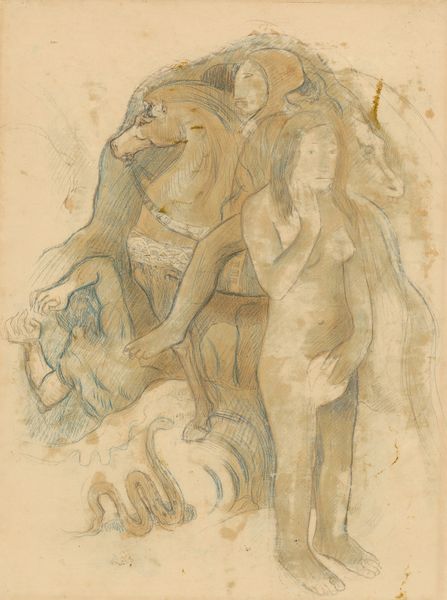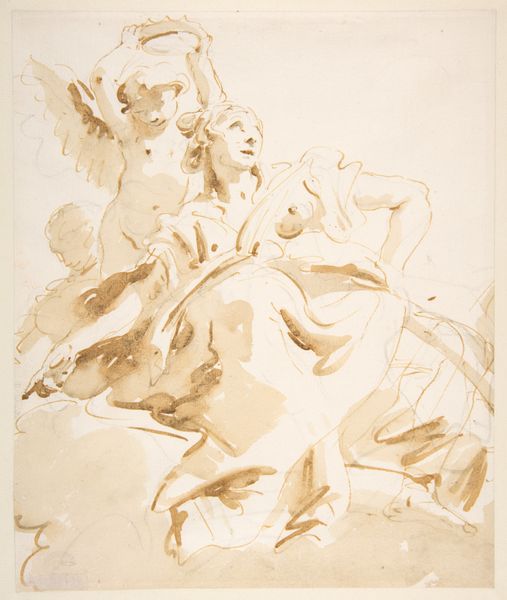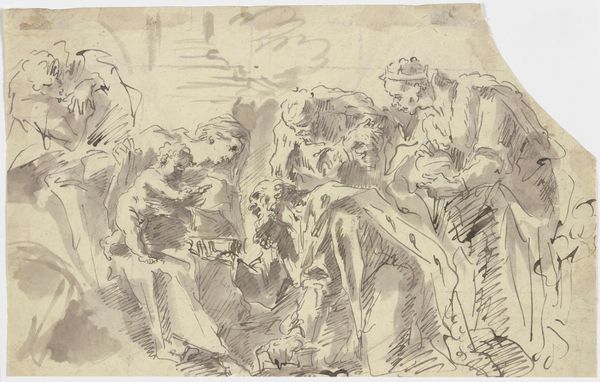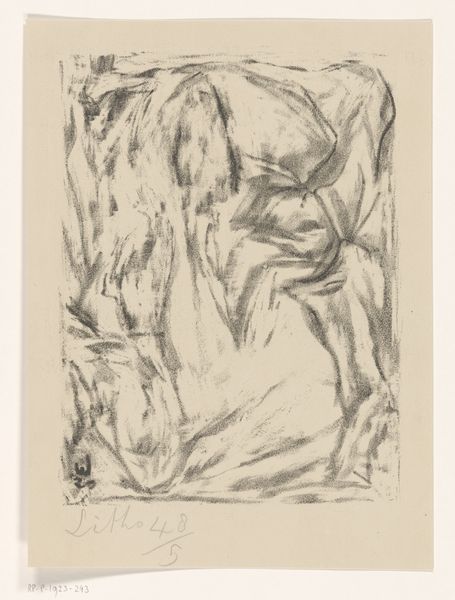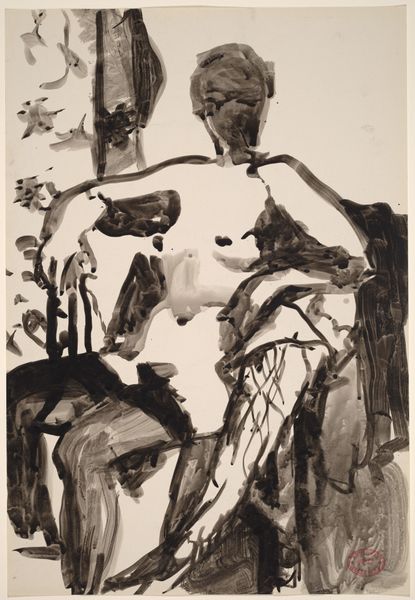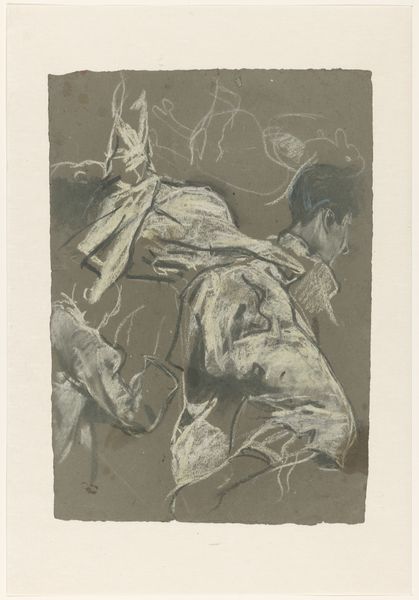
drawing, tempera, ink, pencil, chalk
#
portrait
#
drawing
#
allegory
#
baroque
#
tempera
#
figuration
#
ink
#
pencil
#
chalk
#
miniature
Copyright: Public Domain
Editor: So, this is Tiepolo's "The Annunciation," a drawing from around 1720 to 1730, rendered in pencil, chalk, ink, and tempera. The loose sketching gives it a feeling of dynamic energy. What draws your eye to this work? Curator: I'm immediately struck by Tiepolo's material engagement here. Look at how he blends chalk, ink, and tempera – seemingly disparate media – to depict the divine. It highlights the very act of artistic labor. Do you see how the blurring of the lines between drawing and painting reflects the blurring between the earthly and the divine he's trying to portray? Editor: That's an interesting point! I hadn’t considered the mixing of media as a metaphor. It's interesting how the divine and the material are mixed together in this scene! Curator: Exactly! Consider also the economic context. Pigments in this period weren't just colours; they were commodities. The choice of tempera versus, say, oil paint, wasn't purely aesthetic, but also practical and economic. Editor: So the materiality becomes a record of not just Tiepolo's choices but also the socioeconomic forces at play? Curator: Precisely! And consider the purpose of this piece; the drawing itself allows one to get closer to the methods employed, as this image can allow closer proximity without the distance from the varnishing and frame around the finished painting! Think of this sketch as an artifact, revealing the modes of production. What was art production at the time? Was it a singular practice by the master, or an assembly of skilled workshop artisans that assisted in bringing the works to fruition? Editor: Fascinating! I’ll definitely be looking at art through the lens of materials and production from now on! Curator: It opens up a whole new perspective. Understanding the 'how' alongside the 'what' is crucial.
Comments
No comments
Be the first to comment and join the conversation on the ultimate creative platform.
